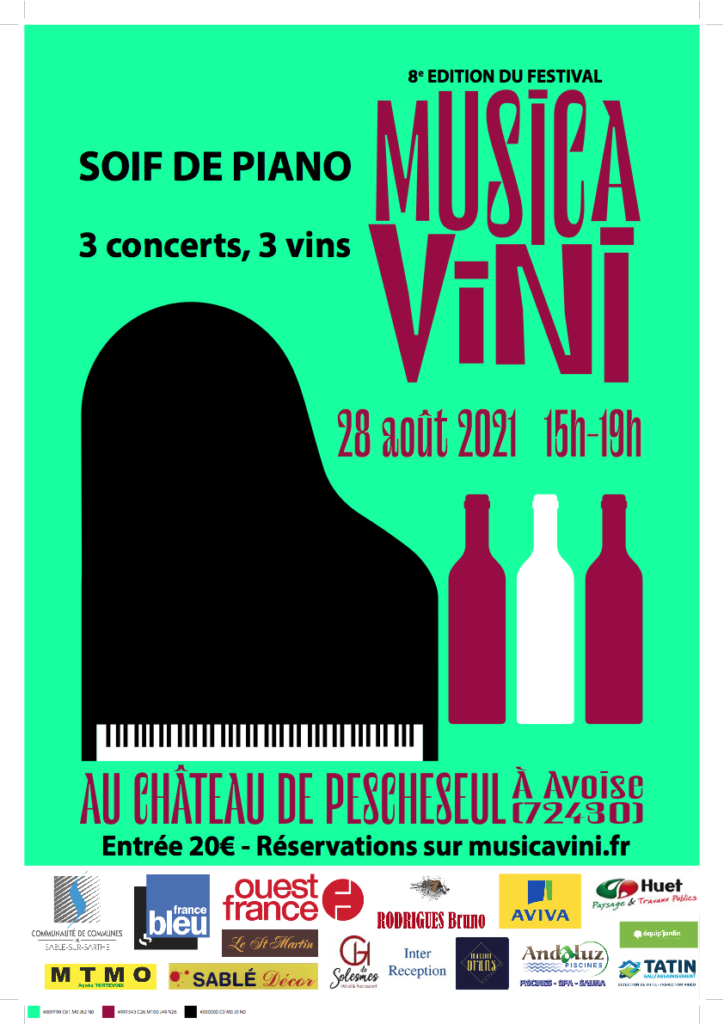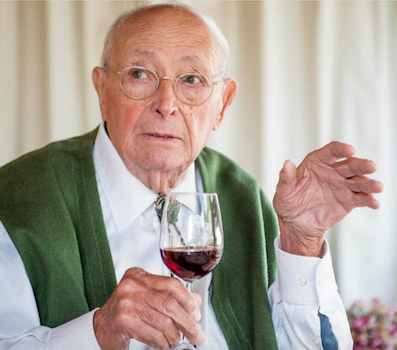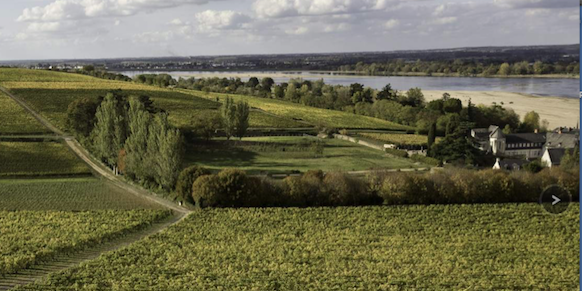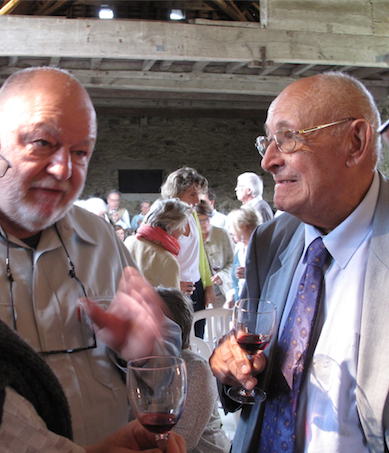RETOUR SUR MUSICA VINI UN MOIS APRÈS
La maigreur des réservations, à peine 40 à la mi-août, stoppées net à l’annonce du pass sanitaire, avait inquiété les organisateurs, finalement rassurés par l’affluence de dernière minute : 150 à 160 participants se retrouvaient avec plaisir sur le site du château de Pescheseul à Avoise samedi 28 août dernier, pour le festival Musica Vini 8ème édition.
Ce festival a pour particularité, rappelons-le, de réunir pour trois concerts-dégustations des vignerons présentant leur vin dont s’inspirent les musiciens pour jouer ou improviser devant un public qui déguste en écoutant. Indépendant de tout producteur ou organisation professionnelle, le festival Musica Vini se donne la possibilité de varier librement sa programmation chaque année.
Pour sa 8ème édition, le festival Musica Vini conjuguait successivement baroque et entre-deux-mers, musique contemporaine de piano et saumur-champigny, jazz et anjou-villages, pour offrir des correspondances sensorielles dans un environnement seigneurial en bord de Sarthe près de Parcé, au château méconnu de Pescheseul.
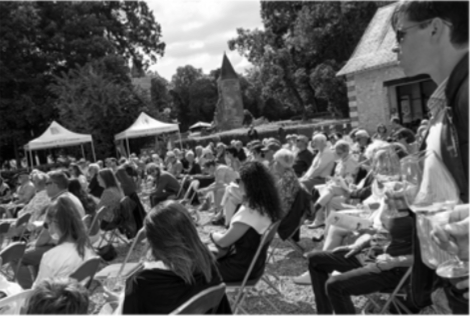
NOBLESSE MÉLODIQUE ET FIÈRES SONORITÉS. C’est l’ensemble baroque ZELENKA qui débutait sur un Château Bellevue 2018 — vin blanc d’entre-deux-mers produit à Sauveterre-de-Guyenne par YVES d’AMÉCOURT, l’unique vigneron au sein de sa très nombreuse famille hôte du festival en son château de PESCHESEUL. Fondé sur l’amitié entre chambristes passionnés par la sonate baroque, l’Ensemble Zelenka recherche la « noblesse mélodique » et des couleurs sonores « fières et fougueuses. »
Au programme la Sonate en écho d’Antonio Lotti (1667-1740) — deux hautbois éloignés se répondant d’un coin à l’autre de la cour des anciennes écuries. Puis la Sonata da chiesa de Corelli (1653-1713). Et deux sonates en trio jouées en quintette, l’une de Telemann, l’autre de Vivaldi : en musique baroque, la sonate en trio est écrite pour trois instruments mélodiques jouant en canon (hautbois, Cyril Ciabaud et Eric Mège; basson, Anaïs Reyes), accompagnés d’une basse continue (clavecin, Anastasie Jeanne) doublée par la contrebasse (Gerald McFarren). Le concert était conclu par un morceau contemporain, l’émouvante milonga d’Astor Piazzola, Oblivion, qui a achevé de conquérir l’assistance sous le soleil enfin revenu en cette fin d’août.
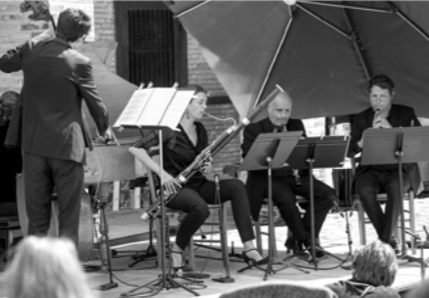
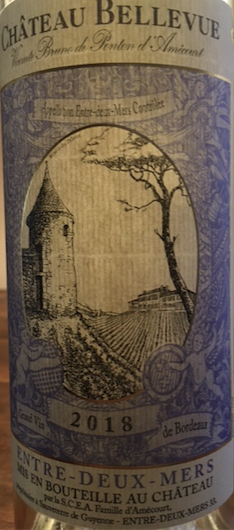
Pendant qu’ils jouaient, l’entre-deux-mers aux reflets dorés, aux arômes de fleurs blanches, d’orange et de citron, humectait le gosier des spectateurs ravis de ces fiançailles musique/vin qui allaient se prolonger tout l’après-midi. L’animatrice vin MATHILDE FAVRE D’ANNE, sommelière active à Angers comme consultante après la vente de son restaurant gastronomique (et adjointe au maire en charge du rayonnement de la ville), qui animait les échanges entre les musiciens et les vignerons, notait que la « fraîcheur » du Château Bellevue répondait à celle des interprétations de l’Ensemble Zelenka.
« SOIF DE PIANO« . Pour la première fois cette année, Musica Vini dédiait au piano la majeure partie de son programme, d’où son titre. Vers 16h il commençait à faire soif autour des bâtiments du château quand on avait suivi le guide Yves d’Amécourt (vigneron du Sud-Ouest également historien de son ascendance remontant au XIIème siècle), volontiers disert sur les différentes époques de Pescheseul, château en forme de T bâti, agrandi et modifié de la féodalité à nos jours.
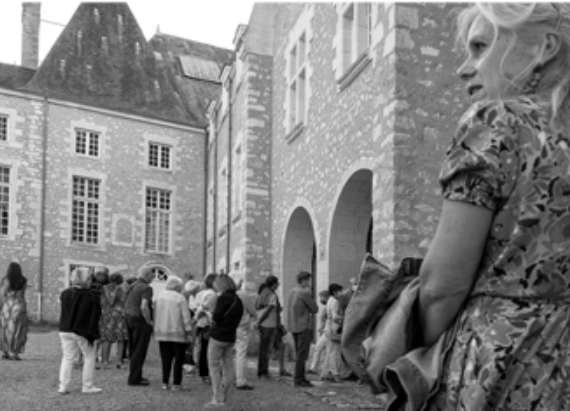
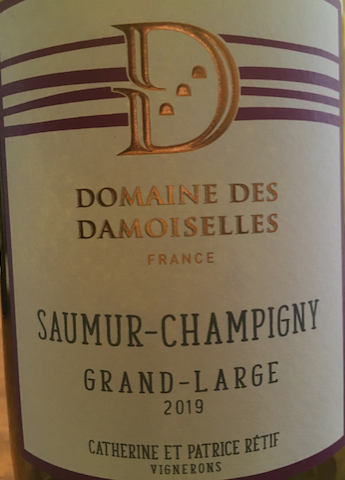
Alors pour se désaltérer, rien de mieux que l’alerte saumur-champigny du Domaine des Damoiselles de PATRICE RÉTIF, cuvée Grand-Large 2019 — tous ses vins ont un nom de virée en mer, Côte Sauvage, Tri-Maran, Écume, Horizon, etc. —, aux arômes retrouvés de mûre et de violette, qui allait être contrepartie du piano.
Le parcours en forme d’« errance à la Baudelaire à travers la musique de piano du début du XXème à nos jours » imaginé par le pianiste SAMUEL BORÉ, avait pour but de d’évoquer musicalement différentes situations de griserie ou d’ivresse provoquées par le vin. Il avait Claude Debussy pour point de départ avec une pièce du premier livre des Préludes au titre baudelairien, Les songes et les parfums tournent dans l’air du soir. Et pour étapes, courtes et escarpées, Luciano Berio avec son Wasserklavier (« clavier aqueux », clin d’œil au festival où le vin est seul alter ego de la musique); John Cage et In A Landscape (écrit il y a plus de 70 ans, déjà zen en 1948); György Ligeti (Musica ricercata, 2′); Mauricio Kagel (Rrrrrr, 3′). Ou encore, joués plus rarement, Pensées fugitives sur la basse d’Alberti (1) de Görgy Kurtág (4′), Dream images de George Crumb (4’10), Ein Kinderspiel de Helmut Lachenmann (2’10). Et l’hallucinatoire Les Nombres de Mersenne (2) de Tom Johnson, construit selon une figure mathématique répétée pendant 8′, augmentant puis se réduisant pour revenir au nombre initial (extrait de ses Makrokosmos).
(1) La basse d’Alberti est l’accompagnement d’une mélodie par un motif répété de la même durée : note basse – note haute – note intermédiaire – note haute, etc. (2) Succession de phrases musicales de la forme 2n–1 correspondant à 1, 3, 7, 15, 31, 63, 127, 255 et 511, puis 255, 127, 63, 31, 15, 7, 3, 1.
Samuel Boré clôturait son programme varié et réfléchi par la création composée spécialement pour le festival par son ami bordelais FRANÇOIS ROSSÉ, l’un des derniers élèves de Messiaen, Mémoire d’amphore. La pièce, assez décoiffante (3), était introduite par un gong japonais frappé par le compositeur lui-même revêtu d’un kimono, exigeant du pianiste dextérité et talent de comédien, était inspirée elle aussi par Baudelaire — poète capital pour le duo Boré-Rossé, dont on célèbre cette année le 200ème anniversaire de la naissance. Cet opus ambitieux juxtaposant des passages atonaux puissants, un bruitisme de piano préparé, des accords classiques et cérémoniels, se concluait par un bruit de bouchon, d’abrupts hoquets d’ivrogne, de verres trinqués et des coups de gong éparpillés au sein d’accords répétés dans le grave.

Le cabernet franc rubis-grenat Grand-Large 2019, souple, friand et facile à boire, considéré par la sommelière Mathilde Favre d’Anne comme « un vin classique en vis-à-vis de la modernité », se révélait un bienveillant compagnon de route, accueillant chaque étape de ce voyage accidenté mené sans faiblir.
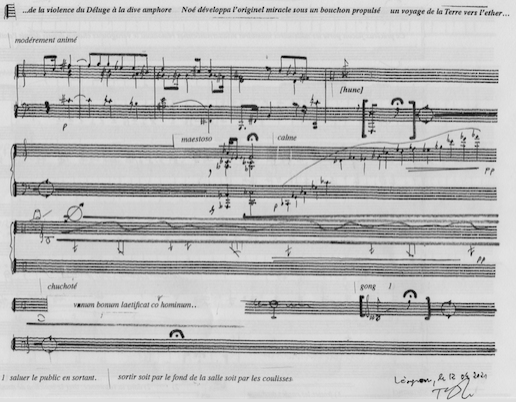
IVRESSE. C’est le titre du 8ème enregistrement publié (4) du trio JEAN-PHILIPPE VIRET (contrebasse), incluant à sa constitution il y a vingt ans EDOUARD FERLET (piano) et, depuis une douzaine d’années, le batteur FABRICE MOREAU, titre qui était aussi celui de la séquence qu’ils présentaient à Musica Vini.
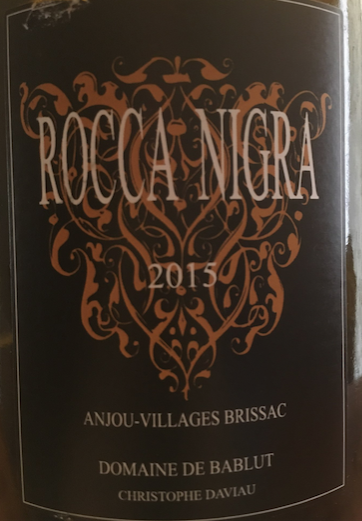
L’animateur musique prévu, BENOÎT COMBES, alors co-directeur du conservatoire de Sablé, qui n’avait pu au dernier moment rejoindre le festival, avait qualifié la musique du trio de « voyage intérieur à trois, de résonances en miroir, comme un jeu de questionnements sans réponse d’un registre à l’autre, un vertige ayant pour but d’étourdir. » À cela Jean-Philippe Viret opinait du chef ajoutant que les « beaux mots des autres » sont souvent plus pertinents que ceux dont un artiste peut lui-même qualifier sa musique.
Il annonçait qu’ils allaient « jouer le jeu au maximum en improvisant vraiment librement » après avoir bu le cabernet-sauvignon d’Anjou Rocca Nigra 2017, proposé par CHRISTOPHE DAVIAU, « en espérant que vous le public percevrez ce que nos papilles ressentent et comment nous allons structurer, comme pour un vin, nos improvisations à l’intérieur des morceaux. »
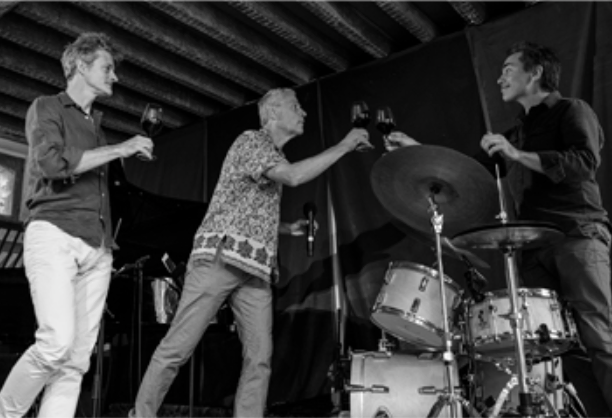
Qu’est-ce que l’ivresse pour le trio ? Le swing ? La poésie, qu’ils chérissent eux aussi ? Le vin ? « L’ivresse renvoie à la joie, au plaisir de jouer ensemble, à l’exaltation de la création » fondée sur l’interaction permanente et l’improvisation, répond Jean-Philippe Viret verre à la main, tenant à trinquer avec ses acolytes et aussi le vigneron de Brissac, avant de mener une série étourdissante de cinq morceaux qui allait durer plus d’une heure.
Le trio s’est montré très convaincant, alternant des phases d’expression individuelle — piano prolixe et inattendu, contrebasse tantôt à l’archet tantôt « parlée » et toujours inspirée, batterie aux sonorités échelonnées du grave à l’aigu dans un solo construit comme un récit sur la composition de Jean-Philippe Viret Jour après jour, digne des grands moments des maîtres Max Roach ou Roy Haynes; et des épisodes fusionnels ardents — contournements caressants, labyrinthes à suspense, entrechocs habiles, livrés avec une volonté farouche de swinguer.
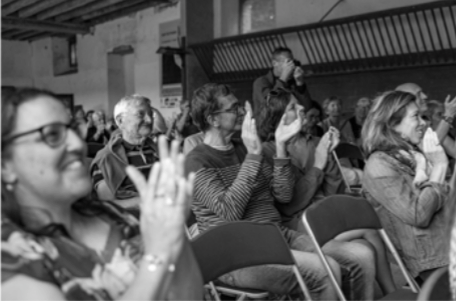
(4) Ivresse, enregistré en concert les 22 et 23 février 2019 à Montreuil. CD Mélisse MEL666027
MUSICA VINI RELANCÉ. Un mois après l’édition du 28 août 2021, qui faisait suite à la pause inquiétante de 2020, les organisateurs du festival reprennent confiance. Et pour cause : la fréquentation inattendue repoussant les doutes d’un été morose. Et la satisfaction manifeste des participants et des intervenants: à l’issue des trois concerts les musiciens ont exprimé leur contentement respectif et se sont déclarés prêts à renouveler l’exercice musique-vin avec autant de conscience que de plaisir; et les vignerons, plutôt circonspects au départ, sont partis rassérénés en raison des échanges avec les musiciens et le public, et des ventes de leur vin aux entractes jugées satisfaisantes.

et la sommelière Mathilde Favre d’Anne : plaisir et satisfaction
Les organisateurs ont déjà une bonne vision de la 9ème édition qui aura lieu le samedi 10 septembre prochain de nouveau à Pescheseul et dans les mêmes conditions qu’aux éditions précédentes.
VIVE MUSICA VINI 2022 !
Photos : Cyrille Le Tourneur d’Ison.

